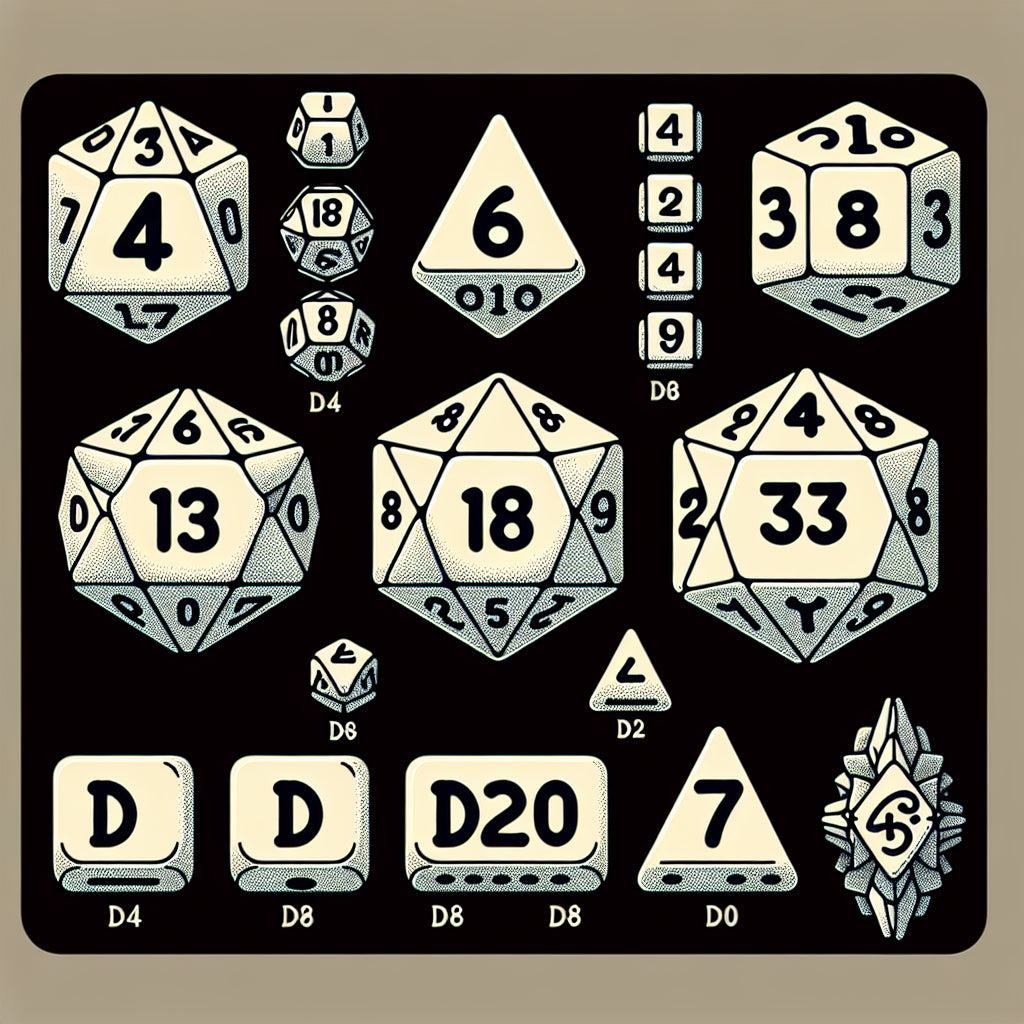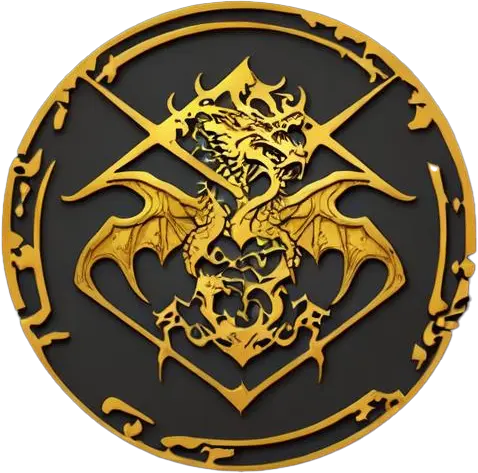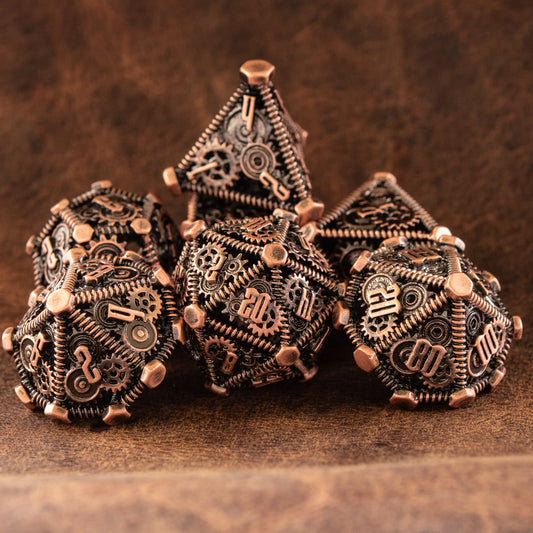
How Many Dice Are Used in Dungeons and Dragons?
Share
How Many Dice Are Used in Dungeons and Dragons?
Introduction
Imagine embarking on an epic adventure where every decision and action is determined by the roll of a die. In Dungeons & Dragons (D&D), dice play a crucial role in shaping the fate of characters and the outcomes of their actions. This article explores the different types of dice used in D&D and why they are essential to the game.
Role of Each Die in Gameplay
d%
Used in combination with the d10 to generate percentile results, the d% is crucial for determining probabilities and outcomes with a higher degree of specificity. It’s often used in situations where a simple success or failure isn't enough, and you need to know the extent of the outcome.
d10
The d10 is versatile, used for higher damage rolls and percentile calculations. It’s common in spells and abilities that deal substantial damage or require precise measurements. When combined with the d%, it helps generate numbers between 1 and 100, making it indispensable for certain mechanics.
d12
The d12, though less commonly used, is essential for certain powerful attacks and abilities. It’s often associated with barbarian class features and heavy weapon damage, making it a favorite among those who prefer high-risk, high-reward playstyles.
d20
The d20 is the most iconic die in D&D, used for attack rolls, saving throws, and ability checks. Its wide range of outcomes (1-20) makes it perfect for determining the success or failure of most actions, from swinging a sword to casting a spell.
d4
The d4 is used for lower damage rolls and certain spell effects. Its unique pyramid shape makes it stand out, and it’s often used for determining small increments of damage or healing, making it a staple for spells and minor attacks.
d6
The d6 is commonly used for weapon damage and ability checks. It’s the die most people are familiar with from other games, and in D&D, it’s used for a variety of purposes, including determining hit points for some classes and damage for many weapons.
d8
The d8 is used for medium damage rolls and some spell effects. It strikes a balance between the lower damage of the d4 and the higher damage of the d10, making it versatile for both melee and ranged attacks.
Standard D&D Dice Set
Components
A standard D&D dice set consists of seven dice: d4, d6, d8, d10, d12, d20, and d%. Each of these dice serves a unique purpose, and together they cover the full range of possible outcomes needed for the game.
Purpose
Each die in the set serves a unique purpose in the game, from determining damage to resolving skill checks. This variety allows for a rich gameplay experience where every roll can lead to a different outcome, adding to the excitement and unpredictability of the game.
Understanding Polyhedral Dice
Definition
Polyhedral dice are multi-sided dice used in tabletop role-playing games like D&D. They come in various shapes, each with a different number of sides, and are used to generate random numbers for various game mechanics.
Types
- d4 (four-sided die)
- d6 (six-sided die)
- d8 (eight-sided die)
- d10 (ten-sided die)
- d12 (twelve-sided die)
- d20 (twenty-sided die)
- d% (percentile die)
Each type of die has its own specific uses, and knowing when to use each one is key to mastering the game.
Why Quality Dice Matter
Aesthetic Appeal
Quality dice are available in various colors and effects, allowing players to choose sets that match their personal style or character theme. This adds a layer of personalization and can enhance the overall gaming experience.
Durability
High-quality dice are built to last, withstanding frequent use. Investing in durable dice ensures that they will remain reliable through countless gaming sessions.
Precision
Crafted for balanced rolls, high-quality dice ensure fair and accurate gameplay. Precision in manufacturing means that each die has an equal chance of landing on any given side, which is crucial for maintaining the integrity of the game.
By understanding the role and importance of each type of die, players can better appreciate the depth and complexity of Dungeons & Dragons. Whether you're a seasoned adventurer or a newcomer to the game, knowing how many dice are used in Dungeons & Dragons and their specific functions is essential for a fulfilling gaming experience.
Do You Need a d100?
The Allure of the d100
The d100, or 100-sided die, is a fascinating addition to any Dungeons & Dragons collection. While it is not strictly necessary for gameplay, its grandiosity and tactile thrill can enhance the experience. Rolling a d100 can feel particularly momentous, adding a layer of excitement to percentile-based outcomes.
Standard Set Usage
In a standard D&D dice set, the d10 and the percentile die (d%) are used together to generate numbers between 1 and 100. This method is perfectly sufficient for gameplay, offering all the functionality of a d100 in a more compact form. For those who crave the unique feel of a d100, it can be a delightful, albeit optional, addition to your dice arsenal.
Enhancing Your Gaming Experience
Tactile Feel
The tactile sensation of rolling a well-crafted die is an often-overlooked aspect of the D&D experience. The weight, texture, and balance of quality dice can significantly enhance immersion, making each roll feel consequential. This physical interaction with the game elements can deepen your connection to the unfolding narrative.
Visual Pleasure
Beautifully designed dice add a visual element to your gaming sessions. Watching a shimmering, intricately designed die tumble across the table can elevate the aesthetic appeal of your game. High-quality dice come in a myriad of colors and effects, allowing you to choose sets that reflect your personal style or the theme of your character.
How Many Dice Should You Have?
Benefits of Multiple Sets
While a standard set of seven dice is sufficient for gameplay, many players find that having multiple sets offers several advantages:
- Speed Up Gameplay: Having extra sets can speed up gameplay, particularly for spellcasters who need to roll multiple dice simultaneously.
- Variety for Different Scenarios: Different situations in the game may require different dice, and having a variety of sets ensures you are always prepared.
- Sharing with New Players: Additional sets allow you to share with new players, ensuring everyone can participate fully without waiting for dice.
Standard Set
A standard D&D dice set includes seven dice, but many players opt to expand their collection. Multiple sets can enhance the flow of the game and ensure that you always have the right dice on hand for any situation.
Why D&D Players Have So Many Dice
Abundance
Having an abundance of dice mitigates the risk of losing any during gameplay and adds to the fun of collecting. Many players enjoy the process of amassing a variety of dice, each with unique designs and colors.
Expression
Dice are a form of self-expression. Players often choose dice that reflect their personal style or the theme of their character. Vibrant colors, precious metals, and intricate designs can make each set feel special and unique.
Smooth Gameplay
Multiple dice sets expedite gameplay by allowing several rolls to occur simultaneously. This efficiency is particularly beneficial in large groups or during complex encounters where multiple rolls are required.
Versatility
Different dice cater to distinct needs, from combat rolls to skill checks. Having a variety of dice ensures that you are always equipped for any scenario the game might throw at you.
Conclusion
A standard D&D dice set comprises seven essential dice, each playing a vital role in the game. Choosing high-quality dice ensures durability, precision, and aesthetic appeal, enhancing your gaming sessions. Whether you are a novice or a veteran player, investing in high-quality dice can elevate your D&D experience. Explore various dice sets and find the perfect ones for your next campaign to elevate your D&D experience.

